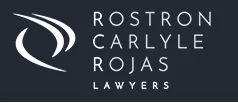It seems ripped from the pages of Ready Player One. But, the Metaverse – a parallel, virtual universe promising endless possibility – is here. While some view it as a marketing exercise never to see high adoption rates, Facebook's rebrand to 'Meta' points to an inevitable collision with our lives. By the 2032 Brisbane Olympics, the Metaverse is forecast to be a trillion-dollar market fueled by five billion users.
Big brands have already begun testing the waters of the Metaverse to big success. Famously, Yuga Labs accumulated $300 million in revenue by selling its Bored Ape Yacht Club non-fungible token (NFT) collection on the Metaverse. Dolce & Gabbana has also used NFTs to sell Metaverse apparel to the tune of $5 million.
It is important to consider the lack of regulation in the Metaverse, which gives rise to copyright and consumer law issues. For participants of the Metaverse, the decision to purchase NFTs may be predicated on the assumption that they receive copyright ownership. This is not necessarily the case as an NFT is purely metadata. Moreover, NFTs can be fragmented, presenting difficulties in provenance and proving infringement.
Recently, Hermes pursued a Metaverse participant who minted an NFT of one of their luxury Birkin bags, which sold in a million-dollar transaction. Although this is likely to be infringing conduct, one issue remains unsettled: can participants circumvent liability by claiming that the act of minting constitutes a digital, artistic performance?
For brands and businesses, steps can be taken to mitigate loss in the Metaverse. The first port of call should be monitoring virtual marketplaces on a consistent basis to detect infringement. Although this may be tedious, takedowns can be promptly initiated.
In building a presence in the Metaverse, businesses should also look to review their trademark portfolio. It is currently unresolved whether a trademark registration related to physical goods extends to their virtual counterparts. However, following major actors in the market like Penfolds and Tommy Hilfiger, filing new registrations specific to the Metaverse is an emerging trend.
If infringement occurs before there is an opportunity to register a trademark specific to the Metaverse, the Trade Marks Act 1995 (Cth) can be utilised. Section 9(1)(b)(ii) of the Act provides that a trademark will be applied in relation to goods or services if it is used in a manner likely to lead persons to believe that it refers to, describes, or designates the goods or services. It is well within the possibility that the use of a trademark, by an unauthorised third party, in relation to the virtual equivalent of goods or services in the physical world is captured by the section.
Alternatively, proceedings can be brought under section 120(3) of the Act. Under this section, the registered trademark owner must prove that:
- The trademark is well-known in Australia;
- The person uses as a trademark a sign that is substantially identical with, or deceptively similar to, the trademark;
- Which sign is likely to be taken as indicating a connection between the unrelated goods or services and the registered owner of the trademark
Remedies can also be sought by way of the tort of passing off or Australian Consumer Law, through misleading or deceptive conduct.
As NFTs become the perfect vehicle to advance the economies of the metaverse, clarity is extremely important. Without regulation in the Metaverse, interests will be harmed. Nevertheless, solutions do exist. For starters, embedding licensing agreements in NFT smart contracts, or releasing under Ethereum Name Service (ENS) are avenues of redress.
Indeed, the Metaverse is unfamiliar and in its infancy. But, future-facing companies are already looking for ways to protect their intellectual property rights in the Metaverse. If you require assistance with sale agreements or defending your rights in the Metaverse, please do not hesitate to contact us for legal advice and assistance.


